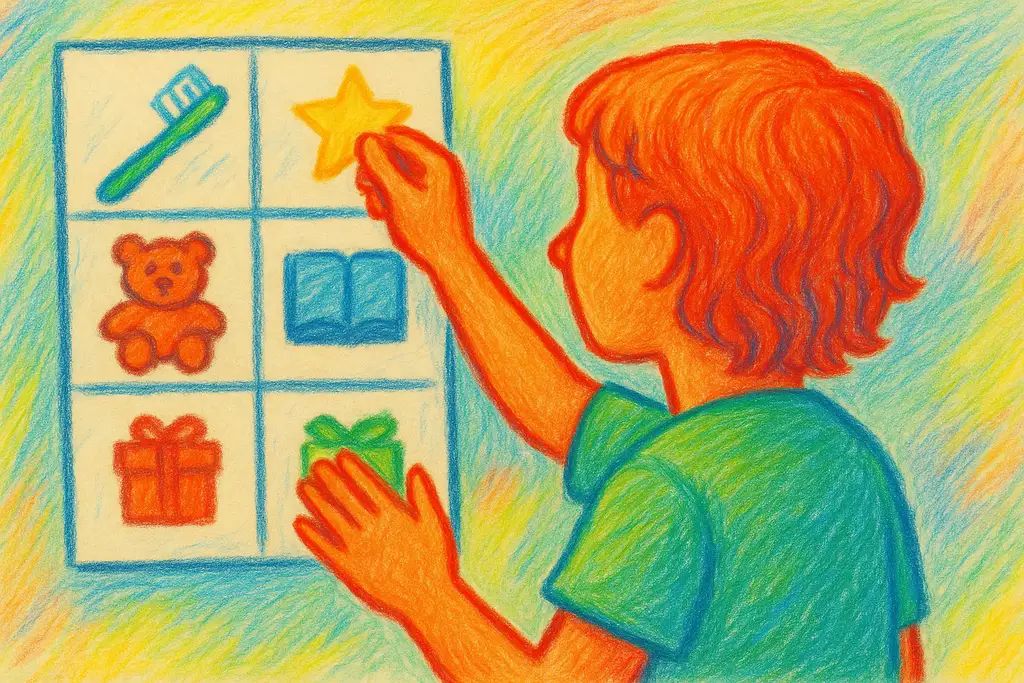Visual Schedules for Motivation and Rewards
Published {$created} by Carsten Blum
Children thrive when routines feel meaningful. But motivating them to complete everyday tasks — brushing teeth, tidying up, or doing homework — can be a daily challenge.For children with autism or ADHD, repeated verbal reminders often lead to frustration.
Visual schedules can double as a motivational tool: not just showing what to do, but also making progress and rewards visible in a clear, positive way.

How Visual Reinforcement Works
Visual reinforcement can be a powerful motivator. When children can see their progress on a chart or schedule, routines become more concrete and achievable. Clear goals and visible rewards give them something positive to work toward, while recognition for each small success shifts the focus from what’s missing to what’s been accomplished. In this way, visual reinforcement reduces stress, prevents conflict, and creates a more positive atmosphere for both children and adults.
Progress tracking: Children see each task completed.
Clear goals: Rewards are linked to visible steps.
Positive focus: Emphasis on achievements, not failures.
Less stress: Visuals reduce nagging and conflict.
Examples of Motivation Systems with Visuals
Sticker charts – add a star or smiley after each completed task.
Token boards – earn tokens for steps completed, exchange them for a reward.
Step ladders – show progress toward a bigger goal (e.g., 5 days of brushing teeth = extra storytime).
Choice boards – let children pick a reward once a routine is done.
How to Create a Motivational Visual Schedule
Define the tasks – what do you want to motivate?
Choose symbols – icons or photos for each task.
Add a reward space – an icon for a treat, playtime, or family activity.
Make it interactive – stickers, magnets, or taps in an app.
Keep it short-term – rewards should be achievable daily or weekly.
Example Reward Schedule
Task | Symbol | Status |
|---|---|---|
Brush teeth | 🪥 | ⭐ |
Tidy room | 🧸 | ⭐ |
Homework | 📖 | ⭐ |
All 3 done → | 🎁 | Playtime reward |
Tips for Success
Focus on effort, not perfection.
Keep rewards simple – extra play, story, or family time often works best.
Be consistent – the system should be predictable.
Fade out rewards gradually – over time, intrinsic motivation can take over.
Benefits Beyond Rewards
When used positively, visual reinforcement teaches children independence, responsibility, and pride in completing routines.Instead of stress or power struggles, families experience more cooperation and calm.
Summary
Motivation doesn’t have to mean bribes or battles.With visual schedules for rewards, children see their progress, build positive habits, and enjoy a sense of achievement.
Next step: Try adding a simple reward symbol to your child’s visual routine today.